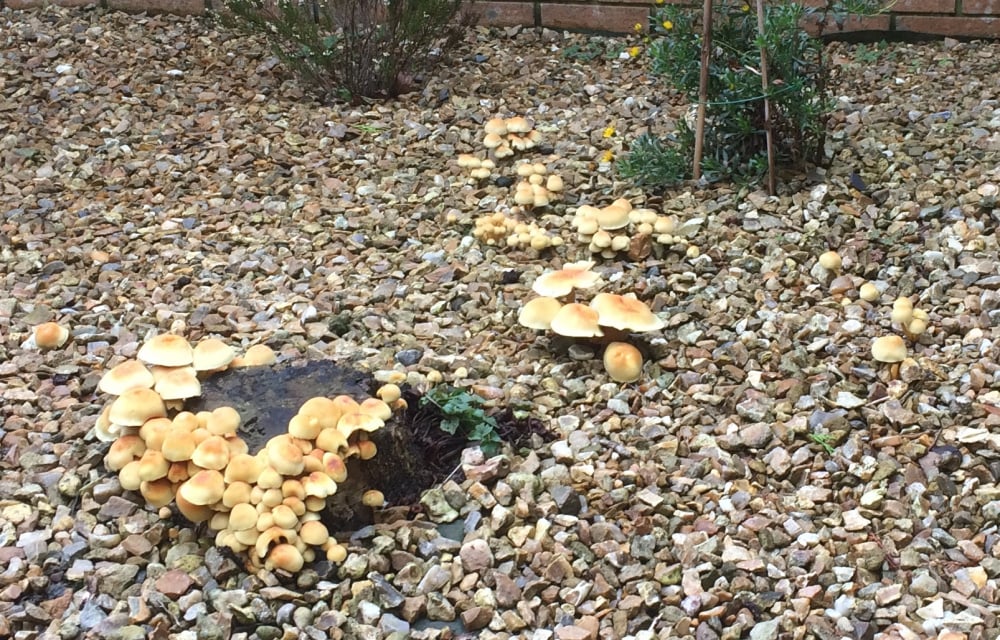This Forum will close on Wednesday 27 March, 2024. Please refer to the announcement on the Discussions page for further detail.
Honey Fungus.
Hello,
Can someone advise if this is Honey Fungus and if so which type please?
It appeared in the tree stump in the foreground and has spread across the shingle (under which is a membrane). I understand not all varieties are harmful but don't know how to assess this,
Any advice gratefully received.

0
Posts
I used to write to the RHS for advice in identifying them but information was vague back then. It could be better now. I have learned to just accept them, but sadly this means accepting loss of plants from time to time. The area where I live would once have been covered in trees, and has miles of hedgerows and scattered small orchards so honey fungus is literally everywhere here.
There are some very thick tough ones which seem to travel singly, without branching -- at least this is how they've appeared when I have come across them. They are often found deeper than the rest. They would serve very well as bootlaces!
Others are much thinner, and though very stretchy, snap more easily with a sort of crackling sound to the (sadly) accustomed ear. The black sheath reveals the white interior when it's severed. Sometimes the outer black sheath pulls off, but the white or creamy inside is much stronger and can't be snapped off.
Another type, or it may be just a different stage of the second one, can appear as a tangle of dark red threadlike rhizomorphs that are soft and break easily. These I often find at the ends of severed rhizomorphs.
I have seen where rhizomorphs arrive at the base of a sapling and circle it, as if looking for an entry point. They can be pulled away and followed back as far as possible and removed.
Where they gain entry through rough bark, often underground, they can turn a strong woody root into the consistency of thick custard. If the tree can't form new roots as quickly as the honey fungus destroys existing ones, it will lean, weaken and eventually die.
I have found that trees and shrubs with smooth bark on their roots seem less susceptible.
But I'm just a gardener, so these are only my observations as such.